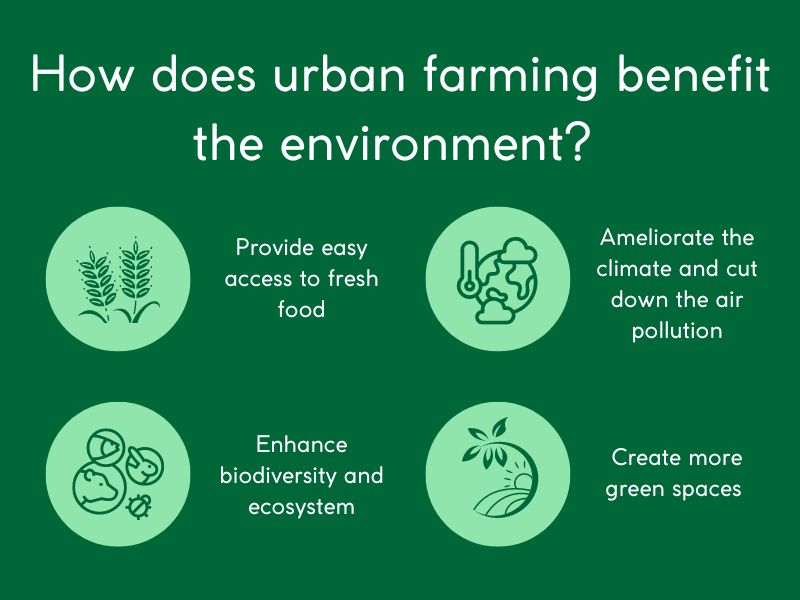The Single Strategy To Use For City Blooming
The Single Strategy To Use For City Blooming
Blog Article
An Unbiased View of City Blooming
Table of ContentsHow City Blooming can Save You Time, Stress, and Money.The 7-Minute Rule for City BloomingExcitement About City BloomingUnknown Facts About City BloomingThe Ultimate Guide To City Blooming
Nature has unbelievable results on our physical and psychological well-being, so it's not a surprise that a straightforward succulent on a desktop or some potted natural herbs on a windowsill can quickly improve an area. Take those plants a step further, and you'll cross right into the region of urban horticulture, which brings much more benefits to individuals and neighborhoods alike.Urban yards can be often tended by people, groups, companies, or organizations. The amount and variety of food expanded can vary widely, as well as the dimension of the job itself, however urban horticulture efforts are all rooted in a city setup.
Whether they contain a collection of pots on a terrace or a cluster of stories on an uninhabited great deal, these gardens provide greater than food, using a host of ecological, economic, and social benefits. Due to the fact that produce is expanded in neighborhood settings as opposed to far-away ranches, metropolitan horticulture minimizes transportation needs, for that reason reducing down on carbon emissions.
Facts About City Blooming Uncovered
Urban yards can be devices of social modification that address injustices, systemic bigotry, and area development problems. Right here at Appetite For Change, we utilize food as a tool to construct health, wealth, and social modification in North Minneapolis. We bring people with each other to learn, cook, eat, and grow food, creating adjustment that lasts.
Surf our store, consider offering, or give away today to sustain our extraordinary influence in North Minneapolis! Together, we can create well-rooted and prospering modification!.

The primary lesson we, once more, need to find out is that cities are not separated from nature. They are a component of the larger biome in which they're situated. As coordinators and designers, we are trained to think holistically. While these fields promote cities as valuable, no city is excellent not also close, and the vulnerabilities and affiliations of the worldwide supply chain has impacted everybody in unanticipated ways.
The Of City Blooming
I will check out versions from the past that advertised city yards and garden enthusiasts, and reveal what worked and what did not. I will certainly review the possibilities and obstacles of being an urban garden enthusiast, what is required to establish up a yard of your own, and what regulations and requirements stand in the method of making cities better at promoting urban gardens.
The quantity of time lost getting to and from traditional offices has been well recorded. The gathered unfavorable effects of air pollution and stress that result from commuting alone by auto as a lot of Americans do are considerable.
The capability to come to the office for partnership and culture, and stay home for focused work is an idea that conserves time, is much better for the setting and is a smarter usage of restricted resources. What hasn't yet taken hold is the link in between these modifications in actions and how cities might react.
The 4-Minute Rule for City Blooming
What are the wellness influences of our cities unexpectedly overdesigned for autos? Exactly how can our city framework (roadways, energies) perform better, not only as channels to move people and products, but as factors to natural systems? Urban phenomena such as smoke, poor water quality and the 'heat island effect' can be reduced by greening our roads, energizing our vehicles and planting our car park.
In a recent article in the Wall Street Journal, Richard Florida discussed the sensation of 'zoom cities,' which attract remote workers by producing a photo of a higher high quality of life (urban gardening). He composed: "For cities, remote work alters the emphasis from enticing companies with unique bargains to drawing talent with services and amenities
, and rooftop gardening. get more This indicates you can manage the location where you expand the food, and stress much less about ecological conditions like dry spell or cold climate. https://sandbox.zenodo.org/records/114051.
Unknown Facts About City Blooming
Growing mass-produced food with conventional farming approaches takes a lot out of the planet. Beyond the many sources that are used on the ranch, the food after that has to be carried from where it is expanded to a store near you. That requires shedding a great deal of fuel. On average in the united state, food is currently transported in between 1,500 and 2,500 miles to get to the consumer.

Report this page